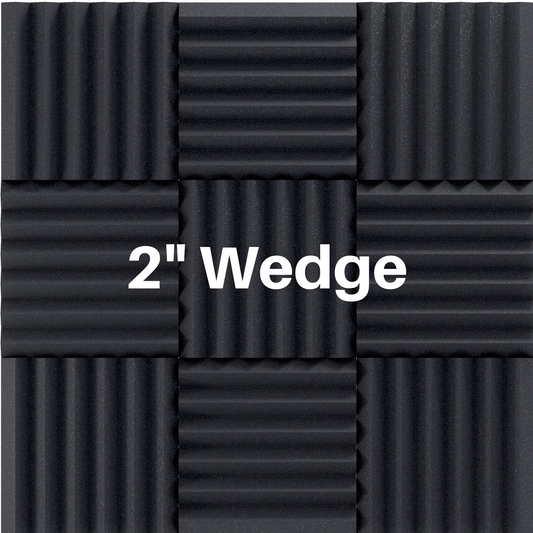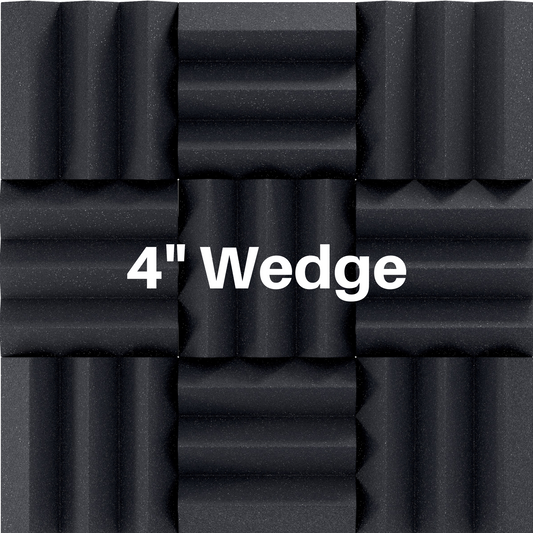Recording Studio Monitors: When to Use Them, Where to Place Them, and If Headphones Are Better
Share
Studio monitors are an important part of any recording studio. They allow you to hear what the recording is going to sound like when it is finished. In this blog post, we will talk about when to use studio monitors, where to place them in your recording space, and if headphones are sometimes better than monitors. We will also recommend some good quality studio monitors that you should consider buying.
Does studio monitor size matter?
Studio monitors come in all different shapes and sizes. Some are designed to sit on a desk, while others are designed to be mounted on a wall. There are even some studio monitors that come with stands so that you can place them at the perfect height.
Most people in a home studio need nearflied studio monitors which will be placed in close proximity to your ears. Most of these come in a 5 inch or 8 inch option.
You do not want to get huge studio monitors if you have a small room! This will provide too much sound pressure in your small space and cause problems. Conversely, if you have a large recording studio, you will want to get larger monitors so that you can fill the room with sound.

We have heard from many of people who pack small rooms with a huge amount of power. Then, they message us and say they spent a bunch of money on huge monitors and subs but they sound like crap! Don't do this! Get the proper monitor size for your room.
Choose monitors that fit your budget and fit your room size!
Where to place studio monitors in a room?
When choosing studio monitors, it is important to think about where you will be placing them in your recording space. If you have a small recording studio, you might want to consider buying desk-mounted monitors. If you have a larger recording studio, you might want to invest in wall-mounted or stand-mounted monitors.
Prior to placing your monitors you need to identify a starting point for your listening position. The listening position is the spot where you will sit when mixing, mastering, listening, etc.
Begin by facing your speakers to a short wall of your room. It is better for the listening position to face a short wall vs a long wall in order to get a flatter bass response. Also, this gives you more distance between your ears and the rear wall. If your rear wall tends to reflect sound then it should be a minimum of 10 ft behind your ears. If less than 10 ft you might need treatment with some sound dampening acoustic panels.
Next, use the 38% rule of thumb (created by by Wes Lachot). Measure the center point between the two side walls and 38% back from the front wall. This is the spot to start with, but does not have to be exact as all rooms are different.
Your right and left speakers should form an equilateral triangle with your listening position. Your monitors sound best when they are the same distance apart from each other as they are from you. Aiming your speakers at your listening point (toeing) can make a huge difference in the sound quality.

Monitor isolation pads are also used to angle speakers into more optimum listening positions. Speaker pads also help reduce vibration and absorb bass recoil providing you with the best sound your speaker can produce.
This concept is illustrated In the below diagram. The white dot is the listening position of the example room. The blue line is the same size as each red line.
 \
\
In the video below we go over this is some more detail.
Studio Monitors vs Headphones
Studio monitors are designed to give you an accurate representation of how your recording will sound. However, sometimes headphones can give you a better idea of how your recording will sound. If you are recording a song with a lot of background noise, you might want to consider using headphones so that you can hear all of the instruments and vocals clearly.
Headphones can be better when actually making the recording. Especially in home studios. This is because of feedback, and not having proper sound transmission blockage in home studios. If you are having trouble getting a good recording with your monitors, try using headphones instead.
Which studio monitors to buy?
There are a lot of great studio monitors on the market. We recommend checking out these.
Yamaha HS series
KRK Rokit series
Mackie MR series
All of these monitors are great for recording studios of all sizes.
We hope that this blog post has helped you to understand when to use studio monitors, where to place them in your recording space, and if headphones might be a better option for recording than monitors. If you have any questions, feel free to leave a comment below. Thanks for reading!








3 comments
Great breakdown of when to use studio monitors versus headphones! The tips on placement are especially helpful for optimizing sound quality in a home studio.
This blog provides valuable insights on the effective use of recording studio monitors, detailing when to use them, optimal placement strategies, and the comparison with headphones.
Great insights on recording studio monitors! Your tips on placement and when to use them versus headphones are incredibly helpful for both beginners and seasoned pros!